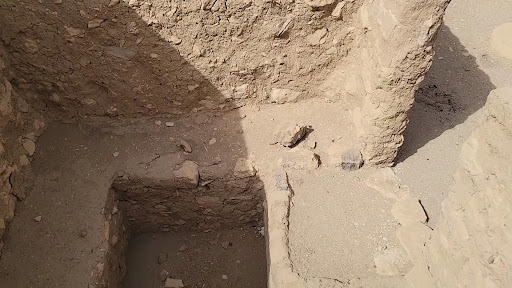Nestled near the Valley of the Kings and Queens is a fascinating village where the skilled workers and artists who painted the legendary tombs once lived. This place, with its charming streets, well-preserved houses, and a quaint temple, could be an archaeological and historical jewel, drawing in waves of tourists eager to immerse themselves in its rich past.
But alas, instead of being a beacon of history, it’s turned into a playground for tourist scams. From the moment you arrive, the experience feels less like stepping back in time and more like stepping into a scene of relentless money-seeking drama.
Your ticket grants you access to three tombs, which are small, stifling, and frankly unimpressive. The real highlight is walking around the village, but even that comes with its challenges. Every few steps, locals will pester you with offers to buy figurines, take photos, or show you “hidden gems,” all delivered with smiles and followed by the universal gesture for a tip: rubbing fingers together.
The figurines, though convincingly hefty and stone-like at first glance, are often made of artificial materials, crafted and painted to look authentic. If you buy one, it’s more of a souvenir than a piece of genuine artisan work, often sold at inflated prices.
What this place needs is a transformation—a way to preserve its dignity and attract tourists without the constant hassle. Imagine informative displays telling the story of the village, staffed by friendly guides who help visitors take photos without expecting a tip. Such changes could make this site a genuine destination, celebrating its history while generating sustainable income.
Until then, this hidden gem remains a frustratingly missed opportunity—beautiful, historic, and worth a visit if you’re patient and prepared to say "no" more times than you’d like. If you can see past the hustle, the charm of this place still shines through.
Pro Tip: Bring your curiosity, but leave your rose-colored glasses at home. Enjoy the walk, skip the overpriced trinkets, and hold onto your...
Read moreVisited 31 October 2022.
Included with the Luxor Pass.
Deir el-Medina translates to Monastery of the town, is the remains of the planned community of artisans that dwelt in and around the necropoleis of ancient Thebes.
In antiquity this place was called Set-Ma'at or the Place of Truth because the workers there were thought to be inspired by the gods in creating the eternal homes of the deceased kings and their families.
The earliest ruins at the site date from the reign of Thutmose I (1520-1492 BCE), son and successor of Amenhotep I, but there is no doubt that it was Amenhotep I who first planned the site. He and his mother, Ahmose-Nefertari, were worshipped as protective gods at the site throughout its history. By the time of the New Kingdom tomb robbing had become rife.
The Valley of the Kings was selected as the new necropolis for royalty and the village was planned for easy access (a half hour's walk) from a worker's home to the tombs. The village was in continuous use from the time of Thutmose I until the collapse of the New Kingdom around 1069 BC. Although the community and nearby necropolises were planned to safeguard the tombs of the kings, human greed and opportunity would eventually work to undermine the plan and some of the workers themselves would turn to robbing the tombs they had helped build and protect for an easy and quite substantial payoff. For most of its history, however, the village seems to have functioned as it was intended.
There are a number of tombs open which display the vibrant colours used. While these tombs are smaller (note you might have to crawl into one or two if you're tall but they are definitely not claustrophobic) they are just as important as the tombs of royalty and high officials. Sadly though we know that it was these villagers who helped desecrate and rob the tombs. Away from the main throngs of tourists, you can walk around and see the village, temple and tombs in relative...
Read moreThis place is a gem; my favourite attraction in Luxor. Reason being, tombs are colourful and every artwork tells a story. The colours are so vivid and is so different from the other tombs in Luxor. There are two tombs there (at least open to the public). Access is tricky and requires you to stoop low so if you have mobility issues, you may struggle to get into the lower parts of the tombs. Approaching the entrance, you will first come across the tombs, then from here you walk past the old settlements to get to the temple. The temple is amazing. There are three chambers. The artwork in the 3rd chamber to the right of the middle chamber is jaw dropping; super amazing. The colours are beautiful and I don’t think there’s anything like it in Luxor’s other attractions. If you can’t get to Dendera (Hathor Temple) then visit this temple in Luxor. I didn’t want to leave here! It is true that you will be hassled by these guys who sometimes even stand in front of you. Yes, some may follow you and even harass you but be firm. Don’t fall for any approaches to see unofficial tombs….. You can take photos and record if you want to. Tickets can be purchased at the bottom of the road leading to here. This place is special in my view. Go if you can. It tends to be fairly quiet too! Ticket is one of the most affordable, definitely...
Read more

